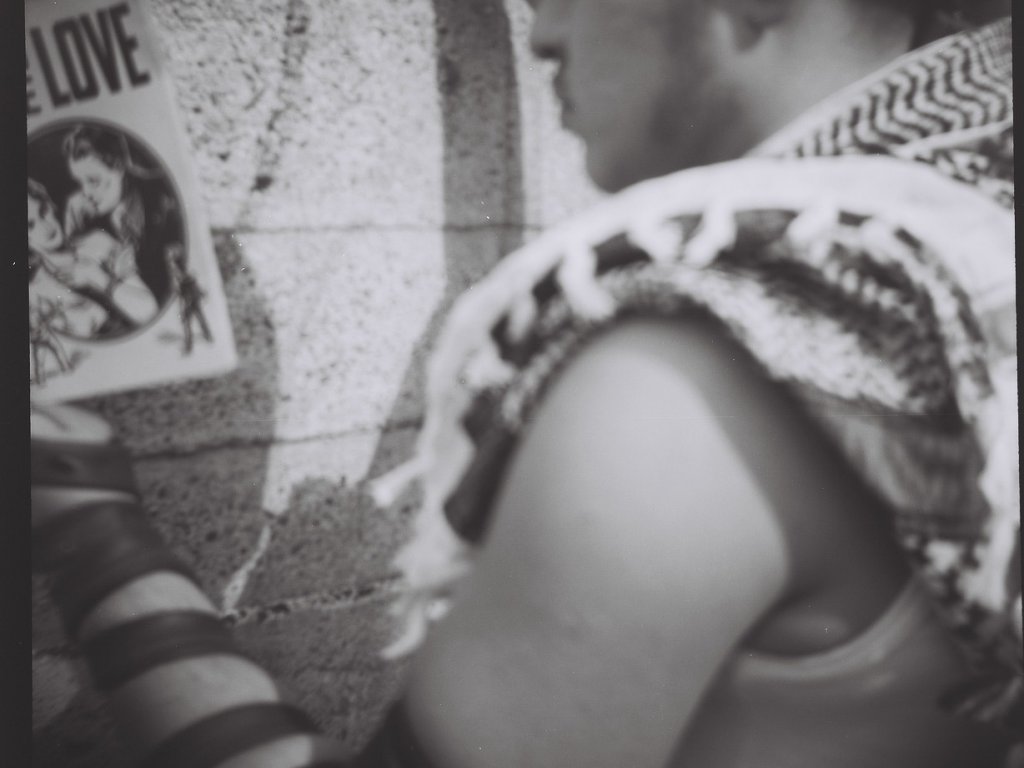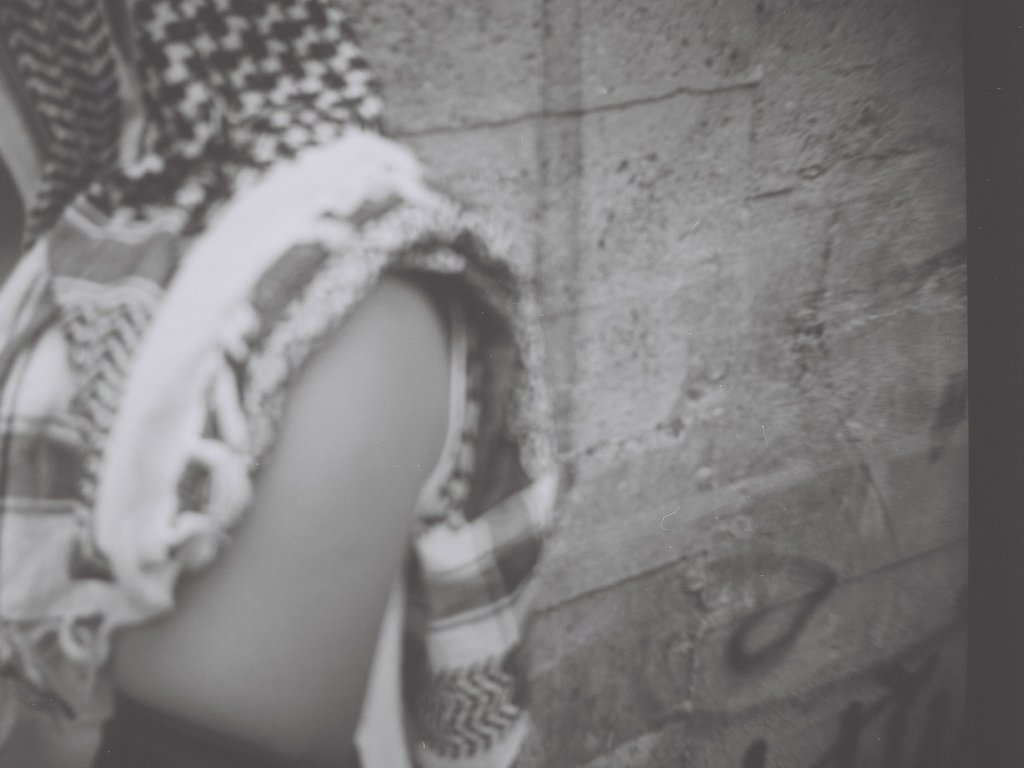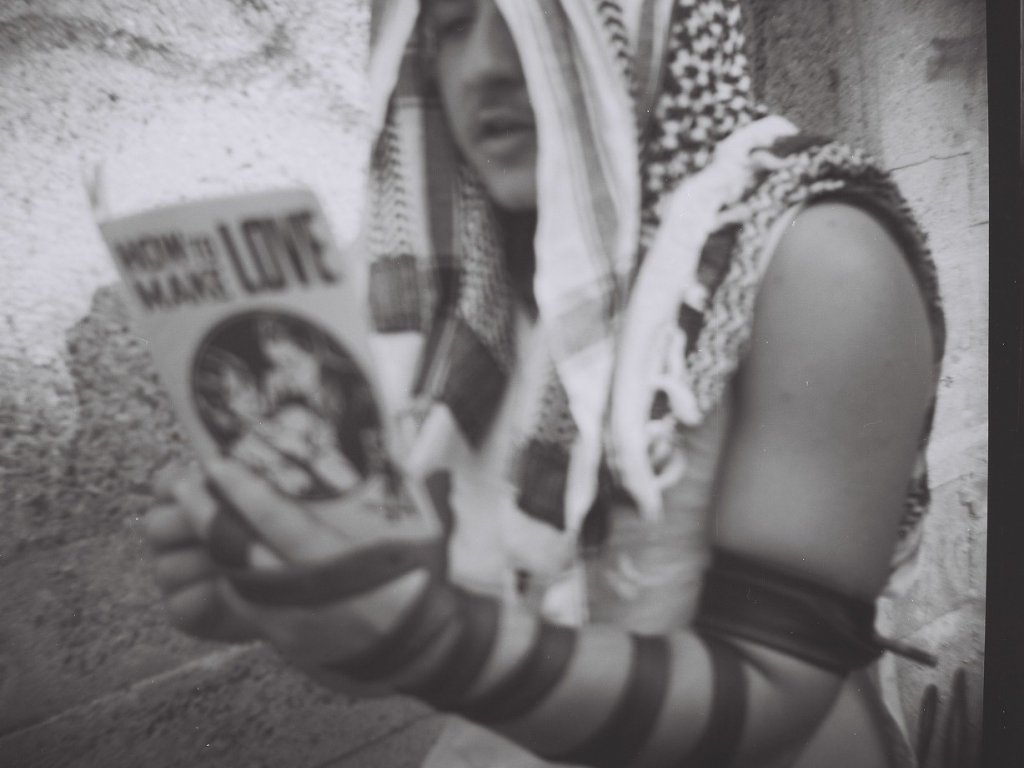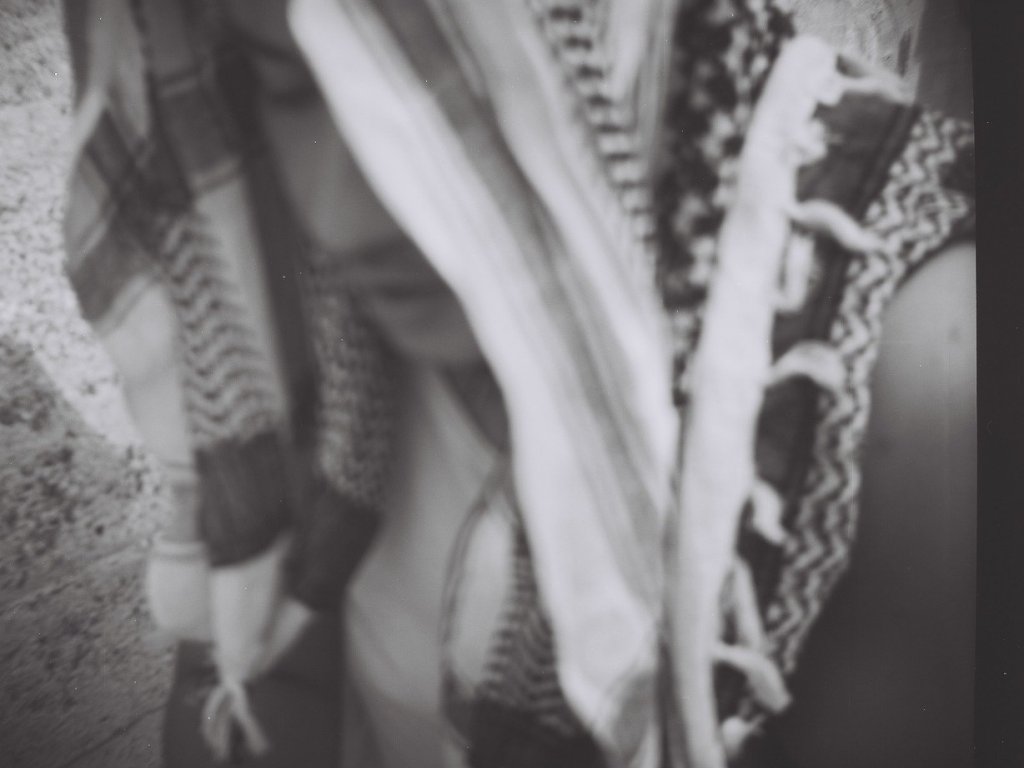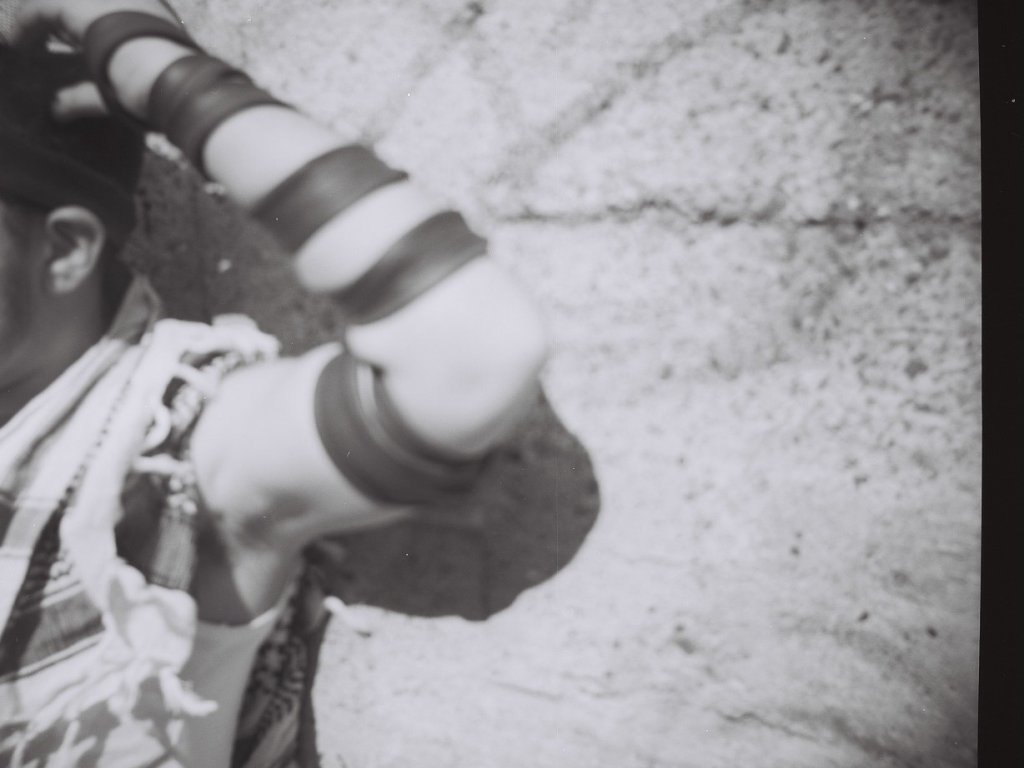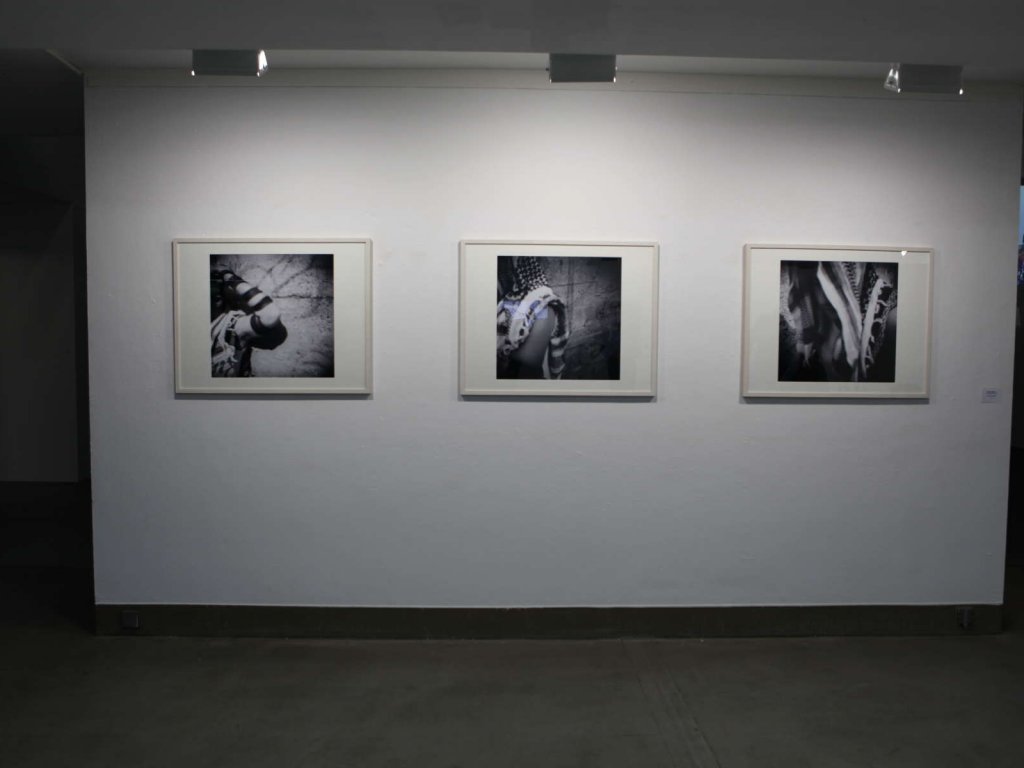Ruvele Gelibter
Bremen, 2011
The series of six black and white photographs reveals sections of
a view of a man, sometimes blurry. For a short moment the photo- graph’s iconography seems to evoke the image of a practicing Jew by his daily prayer at the Wailing Wall: the positioning in front of the wall, posture, tallit (cotton scarf worn during morning prayer by religious jews) and the phylactery wrapped around the underarm. However, in the next moment the picture is broken in many sen- ses. The object covering his head is not a tallit but a keffiyeh (traditional Arabic cotton scarf, which also serves as a symbol for the Palestinian struggle for sovereignty), upon closer appraisal
the phylactery proves to be a profane bicycle tube, which is in no manner wrapped according to its rules, the wall is quite obviously not the Wailing Wall, but a graffiti covered wall, which could be anywhere and nowhere and the hand does not hold a prayer book, but one of those guide books – How to make Love – which promises to introduce the “modern person” to “the art of love”.
Is this a blasphemous ridicule of belief here, or is the ridicule aimed rather at the seemingly scientific-based version of love, drowned in moral and raised to a level of holiness, in the time of the secularized modern? “When the first man looked upon the first woman and was satisfied with her, that was when love began. And that was millions of years ago, if we are to believe our scientists.“ (Morris, Huge 1936, 1987; How to make Love. The Secret of Wooing and Winning the One You love, Robert Beard Verlag, S. 3 )
Through the overloading of the otherwise simple and aesthetically reduced appearing photographs with the most random signs, symbols and references, the work refuses to give any kind of answer and the viewer is plunged into a vortex of irritation and confusion, in which every perceived foundation is pulled from within the feet – the high art of queer politics.
In the picture of a praying Jew with a keffiyeh, the Israel/Palestine conflict is intensely compressed, and a graffiti wall, which could be nowhere and anywhere, is trans-localized. Here it seems to be less about the thematisation of this tangible conflict and more about the question of how this conflict substantiates in the various locations of anywhere and nowhere; as a request to the viewer to position themselves towards this conflict.
And so as various signs and symbols create the opening tone of our story, only to be instantly met with harmonious and harsh dissonances, the location of the scene remains strangely undeterminable, various timeframes and eras overlap. The black and white aesthetic of the pictures is reminiscent of snapshots of everyday life from the 1930s and 40s – but they are in fact shot in the typical Lomo format of the 1960s, taken with a Lomo camera
of contemporary resumed production. The love guide, first published in 1936, was reprinted in the 1980s and still can be found in stores easily, even today. Against every linear understanding of time and progress, and against every ideology of the brand-new, Ruvele Gelibter – or how to make love develops an eclectic, overlapping fabric of time that may be many things, but especially one: retro.
Retro – which always opposes the capitalist logic of new fashions – weaves its subjects, according to Kaja Silverman, into complex networks of cultural and historic references without implying any naïve referentiality. The past, only accessible through its placement in the present, can be ‘read again’ through retro style. Not gone, the past is linked anew to contemporary contexts, interrupted, combined and developed to its most radical and transformative potential. (Silverman, Kaja 1986: Fragments of a Fashionable Discourse, in: Tania Modleski (Hg.): Studies in Entertainment, Critical Approaches to Mass Culture. Bloomington u. Indianapolis: Indiana University Press, S. 139-152, hier S. 150f.) Through linking affinities and connections, Elianna Renner, lovingly and with witty sobriety, produces scraps of a portrait of a life between and on the borders of sex, religion and culture, passions, sexuality and forms of desire.
Ruvele Gelibter poses in a tzitzit shirt (undershirt with prayer fringes worn by religious jews) in front of the wall, arm clasped behind head, sensually indulging in the gaze of the camera, like Querelle in a Fassbinder film. Tattooed chest, a cycle tube wrapped around the arm and recorded in the mystifying aesthetic of a Lomo camera. The pictures develop a queer erotic, which does not exist beyond the world of politics, religion and culture, but unfolds right there, within it – with all its provocative excitement and harmonies.
